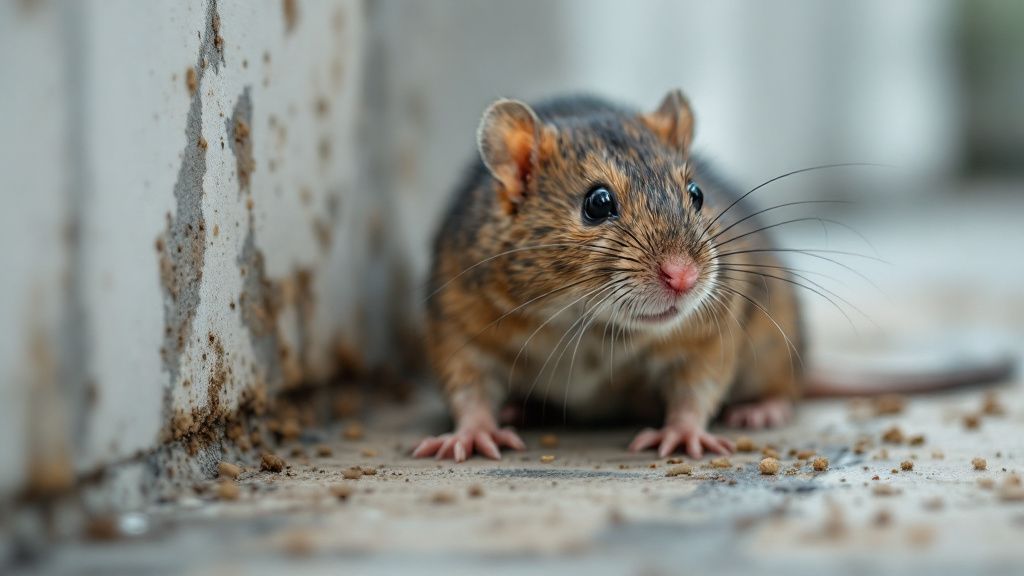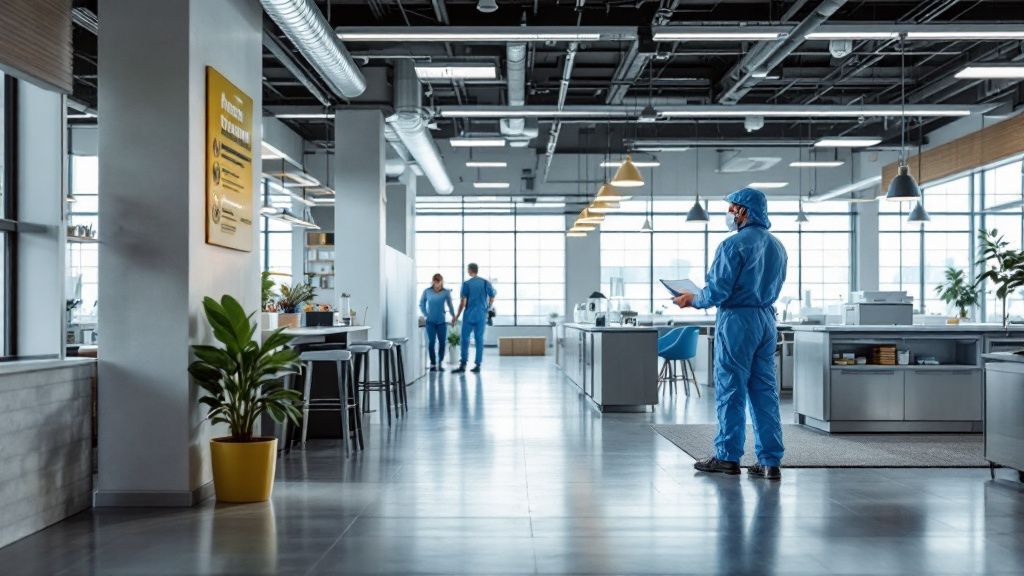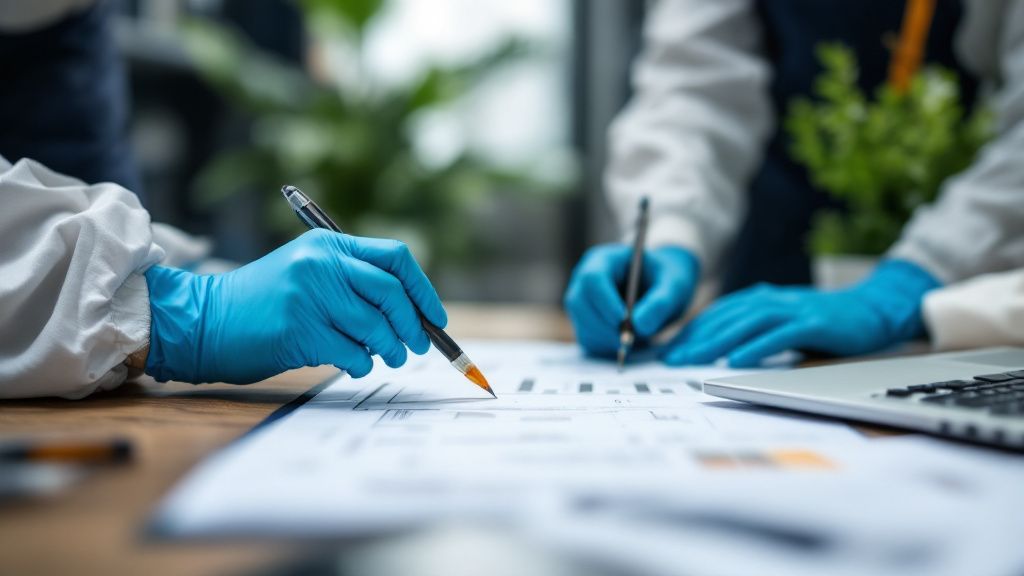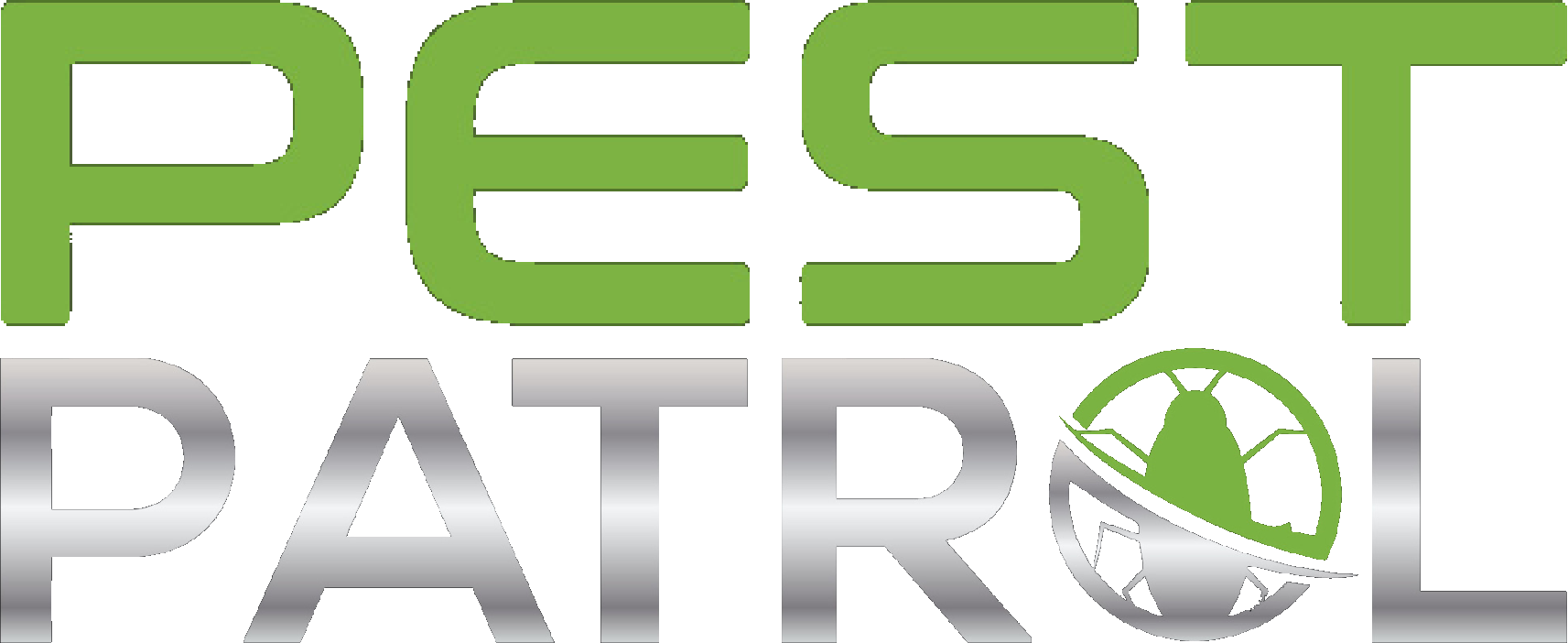Dealing with pests in commercial spaces can feel like an endless battle, impacting both the environment and reputation of your business. Professional solutions are designed to effectively manage and eliminate these unwelcome intruders, ensuring a safe and sanitary workplace. Pest control experts employ tailored strategies, utilizing the latest technology and eco-friendly treatments to address infestations at their source. From regular inspections to implementing preventive measures, these specialists work diligently to keep your commercial environment spotless and pest-free. With precise identification and targeted action plans, skilled pest control ensures minimal disruption to your operations, providing you with peace of mind and a healthier atmosphere for everyone involved.

Identifying Common Commercial Pests
What types of pests are most likely to invade your commercial space, and what impact do they have on your business operations? Recognizing common pests is critical for effective pest control. Cockroaches are notorious for spreading pathogens and allergens, often hiding in kitchens and storage areas. Rodents, including mice and rats, can cause significant property damage and pose health risks by contaminating food sources. Each pest type presents unique challenges that can disrupt daily business activities and affect your bottom line.
Rodents, such as rats and mice, are often drawn to commercial spaces due to the abundance of food and shelter. These pests can chew through electrical wires, potentially causing fires and equipment malfunctions. They are also carriers of diseases, making it crucial to identify signs of rodent activity, such as droppings or gnaw marks, to implement timely and effective pest control measures.
In addition to rodents, insects like ants and termites often infiltrate commercial properties. Ants are primarily attracted to sugary foods, creating colonies that spread quickly throughout a building. Termites, on the other hand, silently destroy structural components, leading to costly repairs. Identifying these insects early can prevent severe damage to your property and maintain a safe environment for employees and customers.
Flies are another common pest in commercial spaces, especially in environments where food is prepared or stored. They not only annoy but can also contaminate food products with bacteria like E. coli and Salmonella. Regular inspections and maintaining cleanliness are essential in minimizing fly infestations, safeguarding the health of those within your business premises.
Being proactive in identifying these pests and recognizing their potential impact can help you take necessary steps in pest prevention. Implementing a comprehensive pest management plan ensures you tackle these challenges head-on, providing a pest-free commercial environment. In doing so, you safeguard not only your property but also your business’s reputation and operational efficiency.

Challenges in Commercial Pest Control
Commercial pest control presents a unique set of challenges that can be complex to manage. The vastness and diversity of commercial spaces mean that pests often find numerous hiding spots, making traditional eradication methods less effective. Each type of business environment, whether food processing or hospitality, presents its own pest problems, requiring tailored solutions. Larger areas demand more resources and vigilant maintenance to ensure effective pest management strategies align with stringent health and safety regulations.
Tracing its evolution from the early 20th century, pest control has dramatically transformed alongside the commercial sector’s growth. Initially reliant on basic chemical solutions, the industry has embraced advanced technologies and environmentally friendly practices to tackle pests more sustainably and effectively. Adjusting to modern challenges includes dealing with pests’ increasing resistance to conventional treatments and ensuring minimal impact on the environment while maintaining efficacy in vast commercial settings. Utilizing integrated pest management techniques helps navigate these complexities by combining prevention, monitoring, and control methods tailored to each business’s unique needs.

Benefits of Professional Pest Control Services
Engaging professional pest control services offers numerous advantages beyond do-it-yourself solutions. Expert technicians bring extensive knowledge and advanced tools to tackle pest issues with precision. They tailor bespoke strategies to your specific business needs, targeting pests effectively while minimizing disruption. Their skills ensure pests are not only eradicated but that preventive measures are put in place, keeping your commercial environment protected long-term.
A closer look at XYZ Restaurant’s experience with professional pest control reveals the tangible benefits of such services. Struggling with a persistent rodent problem, the restaurant turned to professionals who quickly identified entry points and implemented an integrated pest management plan. Within weeks, the issue was resolved, highlighting the efficiency and expertise that professional services bring to businesses dealing with pest infestations.
Furthermore, professional services enhance your business’s compliance with health and safety regulations. They provide detailed reports and documentation, ensuring you meet industry standards during inspections. By maintaining a pest-free workplace, you not only protect the health of employees and customers, but also uphold your brand’s reputation, which is vital in the competitive commercial landscape. Choosing professional pest control services is an investment in peace of mind and operational excellence.

Importance of Initial Pest Assessment
An initial pest assessment is critical in developing an effective pest management strategy for your commercial space. This assessment allows professionals to understand the specific pest issues present and the extent of any infestations. By identifying these early, you can prevent more severe problems down the line, ensuring that solutions are both targeted and efficient. It’s a foundational step that informs the rest of your pest control plan.
While many believe that immediate pest treatment is sufficient, there’s a strong case for conducting a thorough initial assessment first. This evaluation provides valuable insights into the environment, the behavior patterns of pests, and potential entry points. By gathering this data, pest control professionals can tailor plans to the unique needs of your space, preventing the waste of resources on generic, ineffective treatments.
Moreover, an initial pest assessment helps in identifying not only visible infestations but also lurking threats that may not be immediately apparent. It provides a comprehensive overview that allows for strategic interventions. This detailed understanding of your business’s pest control requirements leads to long-term solutions that maintain a safe and healthy commercial environment, ultimately saving time, money, and effort in managing pests effectively.

Determining a Tailored Treatment Plan
Creating a tailored treatment plan is essential for addressing the unique pest control needs of any commercial space. Each environment varies in layout, usage, and pest issues, requiring a customized approach. By assessing these specific factors, professionals can devise a strategy that combines multiple pest control methods, from chemical treatments to physical barriers, ensuring effective results with minimal disruption to your operations and ecosystem.
According to recent studies, understanding pest behavior through biological and environmental insights is crucial in formulating effective treatment plans. These scientific findings highlight that each pest species responds differently to control measures, influenced by factors like climate and human activity. By leveraging this knowledge, tailored plans can target pests more precisely, optimizing the success rate and reducing reliance on generic, one-size-fits-all solutions.
Implementing a tailored treatment plan requires the expertise of seasoned professionals who understand the nuances of pest management. These specialists analyze data from initial assessments and ongoing monitoring to adjust their strategies as needed. This dynamic approach not only addresses current infestations but also anticipates future issues, providing a comprehensive pest management framework that evolves alongside your commercial space’s needs. This proactive strategy safeguards your environment and enhances operational continuity and safety.

Modern Pest Control Techniques and Technologies
Modern pest control techniques and technologies have revolutionized how we address pest issues in commercial settings. With innovations such as ultrasonic repellents, infrared detection, and AI-based monitoring systems, pest management has become more precise and less reliant on harmful chemicals. These advanced tools enable you to detect pest activity early and prevent infestations from escalating, ensuring a healthier, more sustainable environment for your business.
Insights from Dr. Richard Kramer, a leading entomologist, suggest that integrating technology in pest control not only enhances efficiency but also supports eco-friendly initiatives. He emphasizes that data-driven solutions help monitor pest populations accurately, allowing for targeted interventions. This approach minimizes collateral damage to non-target species, aligning with broader environmental goals while providing effective pest management tailored to the unique dynamics of commercial spaces. By embracing these modern techniques, you benefit from a proactive stance against pests, maintaining an edge in safeguarding your business premises.


